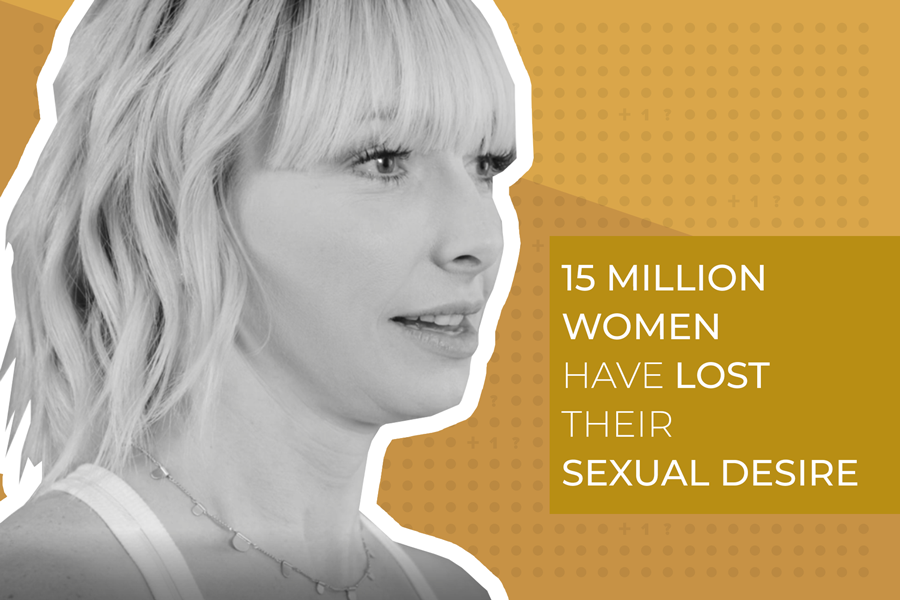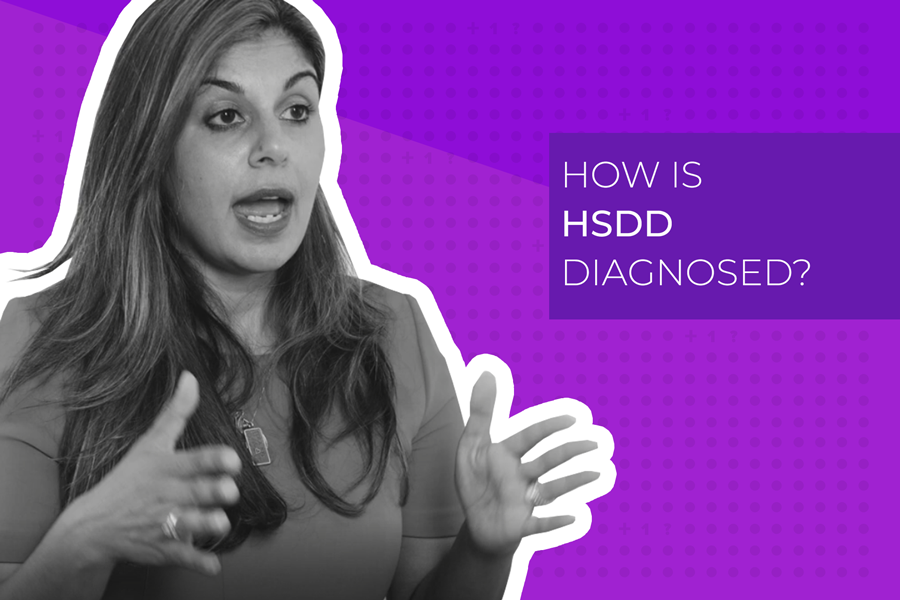15 million women suffer from HSDD (Hypoactive Sexual Disorder).
It’s time to change the statistic.



When it comes to sex, today women are only asked three questions:
But, if we would just add one question…

We could change the conversation for women about sex for good.
Have you asked yourself? It’s time to change the conversation for women to address sexual health beyond reproduction alone. All it would take is for us to ADD ONE QUESTION.
The Truth About Hypoactive
Sexual Desire Disorder

Millions of women suffer in silence, ashamed to discuss their sexual pleasure. Society has reinforced that making it taboo or, worse, trivial. When something troubles men in the bedroom, we address it. When something troubles women, we joke about it. None of us are laughing.

Fact #1
HSDD has been medically recognized as a condition for decades and is the most common form of female dysfunction.
Fact #2
Sexual response is complex for both men and women.
Fact #3
Studies show that low sexual desire affects millions of women in the US and 1 in 10 women are distressed by it, which means they are experiencing HSDD.
Fact #4
Lack of sexual desire can have a biological basis. Brain scan studies show markedly less activity in areas of the brain that are important in sexual response for women who suffer from HSDD.
References
1. Marital Therapy, 3:1, 3-9, DOI: 10.1080/00926237708405343 2. Shifren JL, Monz BU, Russo PA, et al. Sexual problems and distress in United States women: prevalence and correlates. Obstet Gynecol. 2008;112(5):970-8. 3. Clayton AH, Kingsberg SA, Goldstein I. Evaluation and Management of Hypoactive Sexual Desire Disorder. Sex Med 2018;6:59e74. 4. U.S. Census Bureau, 2014; Shifren JL, Monz BU, Russo PA, et al. Sexual problems and distress in United States women: prevalence and correlates. Obstet Gynecol. 2008;112(5):970-8. 5. Arnow BA, Millheiser L, Garrett A, et al. Women with hypoactive sexual desire disorder compared to normal females: A functional magnetic resonance imaging study. Neuroscience. 2009; 158:484-502. 6. Goldstein I, Kim NN, Clayton AH, et al. Hypoactive sexual desire disorder. International Society for the Study of Women’s Sexual Health (ISSWSH) expert consensus panel review. Mayo Clin Proc. 2017;92(1):114-128.









